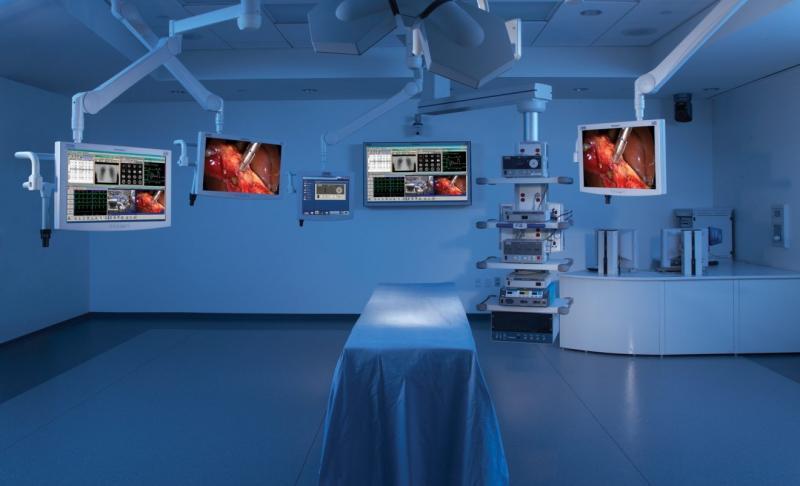Operating Room (OR) integration is revolutionizing surgical environments by combining advanced technologies and centralized control systems into a unified digital ecosystem. This seamless connectivity empowers healthcare providers to enhance workflow efficiency, optimize patient outcomes, and elevate the overall surgical experience. The incorporation of cutting-edge OR integration solutions into modern healthcare infrastructures is not merely a trend but a strategic move towards smarter, safer, and more collaborative operating environments.
Enhanced Workflow Efficiency Through Centralized Operating Room Integration
One of the primary advantages of operating room integration lies in the ability to centralize the control and management of multiple surgical devices and information systems. Traditional operating rooms often suffer from fragmented technology setups, where surgeons and staff must manually interact with disparate equipment such as imaging systems, anesthesia machines, and patient monitoring units. OR integration consolidates these into a single interface, reducing setup time, minimizing human errors, and enabling healthcare teams to focus more on patient care.
With real-time data sharing across devices, surgical teams gain immediate access to critical information such as patient vitals, imaging results, and procedural checklists through a unified display. This synchronization not only accelerates decision-making but also supports better resource allocation within the operating suite. As a result, the throughput of surgical cases can be increased without compromising safety or quality.
Advanced Surgical Visualization and Recording Capabilities in Integrated ORs
Operating room integration technologies enhance surgical visualization by providing high-definition video feeds from endoscopic cameras, microscopes, and imaging equipment in ultimate clarity. This enables surgeons to conduct minimally invasive procedures with unprecedented precision and confidence. Integrated display systems allow multiple specialists in the room to view the same surgical site in real-time, facilitating collaboration and expert consultation during complex interventions.
Furthermore, integrated OR systems support automated recording and archiving of surgeries, which are valuable for education, quality assurance, and medico-legal documentation. These digital records can be tagged with metadata for quick retrieval and review, thus supporting continuous improvement programs within hospitals and surgical centers.
Navigating Research Reports for Operating Room Integration
For healthcare administrators and technology planners seeking detailed insights into the evolving landscape of operating room integration, in-depth market research reports offer comprehensive analyses. These reports cover global adoption rates, technological advancements, vendor evaluations, and future growth projections. They also include segmentation by product types, integration protocols, and end-user industries, providing a holistic view of market dynamics.
By referring to such in-depth studies, decision-makers can benchmark their current OR environments against industry standards, identify emerging solutions, and strategically align their technology investments. Detailed market reports feature case studies, competitive landscapes, and regulatory considerations, which are crucial for successful implementation and scaling of integrated operating room systems.
Impact of OR Integration on Patient Safety and Outcome Improvements
The integration of equipment and data systems directly contributes to improved patient safety during surgical procedures. By enabling precise monitoring and timely alarms, integrated OR systems help detect adverse events early and facilitate prompt intervention. The reduction in equipment-related errors, such as incorrect device settings or miscommunication, plays a critical role in minimizing intraoperative complications.
Moreover, the availability of comprehensive procedure data supports better postoperative analysis and follow-up care, enhancing the overall patient journey. Integration also fosters standardized surgical protocols and workflow, which ensures consistent care quality across different teams and shifts. Hospitals that implement fully integrated operating rooms frequently report lower infection rates, reduced surgical times, and higher patient satisfaction.
Commercial Aspects and Procurement Strategies for Integrated Operating Room Solutions
Hospitals and surgical centers evaluating operating room integration technologies must consider not only the upfront costs but also the long-term return on investment. Integrated systems typically involve modular components that can be scaled according to specific needs and budgets. Vendors now offer flexible financing and service models that incorporate system maintenance, software updates, and technical support, making these investments more accessible.
Successful procurement involves understanding the interoperability of new solutions with existing hospital IT infrastructure and compliance with healthcare standards such as DICOM, HL7, and IEC 60601. Purchasing decisions benefit from consulting comprehensive market analyses, which assess vendor capabilities, technology roadmaps, and customer feedback.
Future Outlook: Innovations Driving the Growth of Operating Room Integration
The upcoming years promise significant innovation in operating room integration with the advent of artificial intelligence, machine learning, and augmented reality. These technologies are expected to further enhance intraoperative guidance, predictive analytics, and surgeon training modules. Additionally, the integration of robotic surgery systems with real-time data visualization and control platforms will redefine precision surgery.
Cloud-based solutions and IoT connectivity will enable remote monitoring and tele-mentoring, expanding access to expert surgical guidance beyond traditional geographic limits. The continuous evolution of cybersecurity protocols will also safeguard sensitive surgical data, instilling greater confidence in integrated digital OR systems.
Get This Report In Japanese language: 手術室統合市場
Get This Report In Korean language: 수술실 통합 시장
Read more articles related to this industry:
The Role of Generic Drugs in Reducing Healthcare Costs
About Author:
Ravina Pandya, Content Writer, has a strong foothold in the market research industry. She specializes in writing well-researched articles from different industries, including food and beverages, information and technology, healthcare, chemical and materials, etc. (https://www.linkedin.com/in/ravina-pandya-1a3984191)
#OperatingRoomIntegration#SmartOR#SurgicalIntegration#HospitalTech#HealthcareInnovation#MedicalIT
